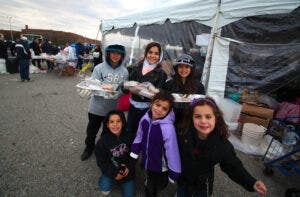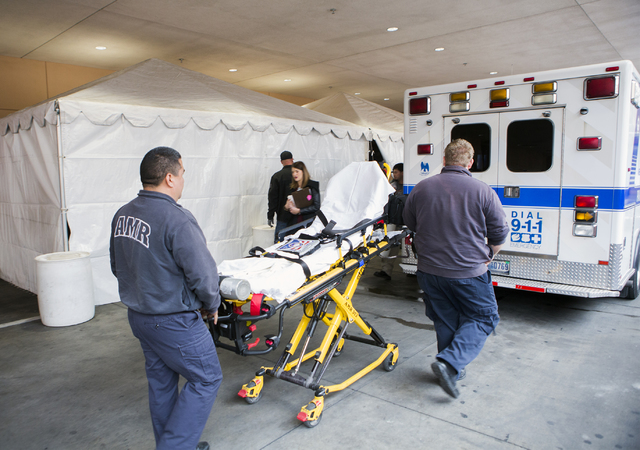Canopy Tents Aren’t Just for Fun
If there’s one thing the event and party rental industry is learning today amid the COVID-19 / coronavirus outbreak, it’s that our industry needs to sometimes adapt to survive. And thankfully, adaptation is something a canopy tent is great at.
We all know what canopy tents are capable of in rental environments. We’ve set them up at birthday parties and bat mitzvahs, weddings and anniversaries, trade shows and corporate expos. They’ll serve your rock band’s “merch” diligently at a music festival, or offer some relaxing shade for outdoor church services.
Canopy tents are a grand facilitator of fun. Their versatility makes them incredibly useful at all sorts of events. But what happens when disaster strikes? What good is all that fun in an emergency situation? That’s where the true adaptability of your canopy tent shines brightest. These shelters will impress during social gatherings, but they might just save a life as disaster relief tents.
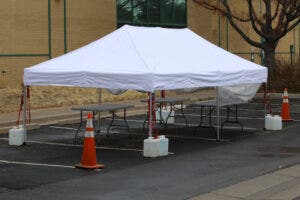 Frame tents are ideal for setting up for extended periods.
Frame tents are ideal for setting up for extended periods.First responders, medical staff, and volunteers can use canopy tents—adapted to become disaster relief tents—in all sorts of applications. They can be set up in the aftermaths of tornadoes and earthquakes. They can house a stockpile of medical supplies or food for distribution to the public. Their uses are nearly limitless. And in an emerging crisis, that versatility will consistently prove itself to be mission critical.
Let’s take a look at ten applications for canopy tents in emergency situations. These ideas might help your rental company find new business opportunities. And better yet, you can help your community overcome a crisis, albeit COVID-19 or something else entirely.
Sanitation Station
In a health epidemic like the coronavirus outbreak, personal hygiene and sanitation are absolutely critical. We’ve learned during COVID-19 that maintaining our hygiene and cleaning our rental equipment are vital for the safety and well being of our customers, our employees, and ourselves.
A sanitation station might be as simple as setting up a pop up tent with a folding table, a pair of folding chairs, and some hand sanitizer. More elaborate setups might have hand washing stations or even portable showers. These are great for setting up in public spaces like parks or rail stations. They’re a good option for setting up in areas with lots of foot traffic during an emergency; school or hospital parking lots, public parks, etc.
Food Distribution Tent
During the COVID-19 crisis, we’ve seen schools and charity organizations all across the country working to feed countless millions of children who rely on school breakfasts and school lunches for nourishment. Your canopy tent can be set up almost anywhere and can house food, clothing, medical supplies, and more. They'll provide shade and a place to sit comfortably for the staffers and volunteers working to distribute those goods, too.
Medical Screening, Medical Testing, and Drive Thru Screening
Testing and screening are crucial during a health pandemic, and your canopy tent can be invaluable for these purposes. You can set up your emergency shelter quickly almost anywhere so healthcare providers and first responders can conduct medical screening and medical testing. And larger tents can be used as drive thru screening tents. West coast frame tents and high peak tents will often work better for this purpose since they lack traffic-obstructing center poles.
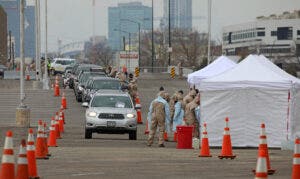
If you’re setting up a drive thru screening tent, consider adding ventilation fans to help get rid of car exhaust, which might accumulate over time. Some vehicles, especially older vehicles and larger trucks, will put out more exhaust than others, and that buildup can pose health risks to healthcare workers, volunteers, and civilians driving into and out of those tents. And the smell inside those tents? That won’t be great either without proper ventilation.
We’ve also seen some creative rental professionals setting up sidewalls in the middle of their tents, to serve as a partition. They’ve used cables, guy ropes, and even bungee cords to run sidewalls down the middle of their frame tents and high peak tents. Customers might ask for this, so you may want to take a look at what you have on hand and see if there’s a way you can fulfill this need.
Triage Tent
Hospitals, clinics, and other healthcare facilities will often handle triage outside of hospitals when they're overburdened. And your canopy tents can make this process considerably easier, safer, and more private by serving as triage tents.
Triage is the process of assessing the severity of a person’s illness or injury and determining where they need to be directed, as well as the urgency of their being seen. It helps first responders figure out who needs to be seen most urgently. All of these things can be handled inside a triage tent rather than an office space inside a hospital.
Tent sidewalls are important here for the purposes of providing privacy and protecting patients from the elements.
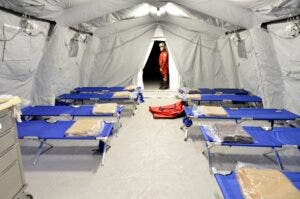
Outpatient Treatment Tent
In some instances of heavy overcrowding at healthcare facilities, medical staff might opt to perform outpatient treatments—minor medical assessments and procedures—in tents, rather than going through the full process of admitting a patient into the brick and mortar building. Medical professionals can administer some outpatient treatments indie a well-maintained, clean canopy tent with sidewalls.
Decontamination Tent
The process of decontamination typically involves multiple steps that could be conducted inside a walled off canopy tent. Decontamination utilizes liquids, aerosols, or particulates as cleaning agents. The decontamination tent (or “decontamination corridor”) shelters both the subject from recontamination and people outside the tent from contamination.
Consult with local first responders, medical facilities, and other agencies to learn more about how a decontamination tent might be used in the field and what your local or state laws are regarding decontamination procedures. You’ll also want to ask what chemicals are being used for decontamination to make sure the process won’t harm your tents.
Emergency Shelter / Emergency Housing
We don’t often recommend using a canopy tent for lengthy periods of time, but a disaster relief tent is just that. It’s a tent that needs to be set up longer term and used more exhaustively than your typical wedding tent. And in a dire situation, your canopy tent might be tasked with providing essential, life-saving aid for those needing immediate emergency shelter.
Large canopy tents, especially those with tent sidewalls, can protect patients or first responders from shoddy weather and offer up some much needed privacy as well. They may not be ideal for long term emergency housing, but your canopy tent could theoretically be used as an emergency shelter if it really came down to it.
Cooling Station or Warming Tent
Disasters can happen all year long, and can displace a whole lot of people in all sorts of weather conditions. Hard working first responders, medical staff, volunteers, and disaster victims will need waterproof quick deploy emergency tents serving as cooling or warming stations when conditions allow for them.
Tent heaters can be used in a warming tent, with responders distributing blankets and warm food and beverages. A cooling tent might be as simple as a disaster relief shelter with a blackout top and tent sidewalls for shade, and coolers full of water and other cold beverages. You might also add ventilation fans to improve airflow in and out of the tent, too.
You’ll want to make sure you’re providing seating by way of folding chairs, and folding tables for distributing items inside these tents as well. If you’re using tent heaters, you may want to consider setting them up outside the tent and piping in heat through diffusers.
Read More: How to Heat a Party Tent in Winter
Related: Are Tent Heaters Safe? Using a Party Tent Heater Safely
Mobile Operations Center/ Forward Operating Base
Some larger scale emergency responses may require the use of canopy tents, folding tables, folding chairs, and more for management, tactical, strategic, and logistical purposes. In these types of scenarios, your canopy tent might return to its social gathering roots as responders and volunteers use one or more of them for organizing, planning, managing, and orchestrating emergency response efforts.
A forward operating base can prove essential in situations involving search and rescue across broad areas. Tents can be set up strategically in various locations around a larger grid, where they’ll serve as central distribution hubs, triage tents, and more.
Other Canopy Tent Uses in Emergency Situations
This is by no means a complete list of all the different uses for a canopy tent in an emergency situation. Your canopy tent can serve all sorts of purposes, including (but not limited to):
- Field supply storage
- Media tent or information tent
- Food prep and cooking
- Temporary dining area
- Childcare tent (couple with sealed air frame games, carnival games, or even commercial inflatables to keep kids entertained and distracted)
- Temporary quarantine tent (for patients awaiting transport to a more permanent facility)
- Staging tent (small private tent for equipping HAZMAT suits or preparing field gear)
- Checkpoints or hydration stations for long lines
- Donation intake; tables or crates for accepting donations
Transforming your canopy tent into a disaster relief tent or emergency tent doesn’t take much. It’s a simple matter of cleaning and disinfecting your canopy tent thoroughly, coordinating with officials and volunteers to ensure you’re fulfilling their needs, and structuring your floor plans based on what they’re asking for. A disaster relief tent doesn’t usually need to be much more complicated than that.
Disasters and emergencies are stressful. They strain the resources of first responders, they task administrators and officials to their breaking points, and impacted civilians struggle with anxieties and stresses most of us can’t even begin to appreciate. Your canopy tents may not serve in starring roles as they might during some other events or parties, but a sturdy, reliable, problem-free canopy tent might just help save a person’s life. And in our line of work, helping save lives isn’t an opportunity that will present itself all too often.
